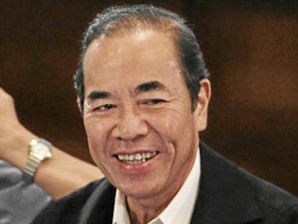Gov’t to forcibly remove illegal structures in major waterways
MANILA, Philippines—The national government will forcibly remove all illegal structures within major waterways in the National Capital Region (NCR) and surrounding provinces to clear water channels of all “obstructions,” be they houses or fish pens.
Following a Cabinet meeting Monday in Malacañang presided by President Aquino, Secretary Rogelio Singson of the Department of Public Works and Highways (DPWH) disclosed to the media in a briefing plans to “blast all of the illegal pens in waterways” in Laguna Lake and to “remove” all obstructions within water channels in Luzon to solve, once and for all, the perennial flooding in these areas.
The President created an interagency body headed by Interior Secretary Jessie Robredo to implement this.
“I have identified a little over … 125,000 families on waterways alone in Metro Manila and about 60,000 to 70,000 in waterways around Laguna Lake that should not have been there. Now, obviously that needs very strong political will to be able to address that,” said Singson, adding:
“So we have started removing (illegal structures), and I just received instructions from the President that [if] push comes to shove, we will have to blast the houses if they won’t leave within a certain period. And we just continue to meet with the LGUs that, I think, it has come to a point that we will have to set a deadline when they should be taken out.”
Article continues after this advertisementHe recalled that during the time of President Fidel Ramos, the government had brought in the military to “blast all of the illegal fish pens in the waterways.”
Article continues after this advertisementSingson hinted that the directive could include structures within water channels at the Pampanga delta.
He described “natural floodplains” such as the Pampanga delta as “high risk areas” for floods because they are “natural catchment or floodplain, and thus are not suitable for residential or commercial/industrial use.
“They have to be removed,” said Singson, who added: “Therefore, the intention is not to have any settlements in these floodplains. There should be no houses in these places because they are expected to be flooded everytime there’s rain.”
Flood control master plan
At the Cabinet meeting, the President approved the implementation within two weeks’ time of “high priority” and “high impact” flood control projects which include the repair of breached dikes, upgrading of aging pumping stations, and clearing of clogged waterways.
The short-term projects, which will initially cost some P5 billion, are expected by the President to be finished in a year’s time.
The meeting in Malacañang was convened by the President to assess the damages wrought by “Habagat 2012.”
The President, who toured flooded areas in the NCR, Central Luzon and Laguna last week, finalized his short- and long-term solutions to flooding with secretaries of concerned agencies during the two-hour Palace meeting.
However, for longer term flood mitigation measures, the government is looking at a whopping P352 billion to bankroll a “flood management master plan for Metro Manila and surrounding areas,” which was reported by the Inquirer on Sunday.
“But keep in mind this is over a long period—that the planning period was up to 2035,” said Secretary Rogelio Singson of the Department of Public Works and Highways (DPWH).
The master plan will serve as the government’s road map until year 2035.
“The total area of what we are studying covers 4,354 square kilometers, and this includes the river basins of Pasig-Marikina and Laguna Lake. We want flood management on a river basin approach. What it means is we don’t want piecemeal (solutions in the) downstream, but look at the whole river basin and address the flooding on a permanent basis,” he said.
